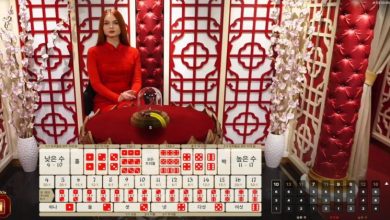The Impact of Skill-Based Elements in Color Prediction Games

Color prediction games, known for their dynamic and unpredictable nature, introduce a captivating blend of chance and skill into the gaming landscape. While chance elements add excitement, the incorporation of skill-based elements elevates these games beyond mere randomness. In this article, we explore the profound impact of skill-based elements in color prediction games, shedding light on how strategic thinking and decision-making skills contribute to success in this engaging genre.
Strategic Decision-Making:
At the core of skill-based elements in color prediction games lies the need for strategic decision-making. Players are tasked with predicting the next color in a sequence, a task that involves assessing patterns, probabilities, and potential outcomes. Successful players employ strategic thinking, considering both short-term predictions and long-term planning to maximize their chances of success.
Pattern Recognition Skills:
One of the key skills honed in color prediction games is pattern recognition. As players engage with the evolving color sequences, they develop an intuitive understanding of recurring patterns. The ability to recognize and anticipate these patterns becomes a crucial skill, allowing players to make informed predictions based on their observations. This skill transcends the gaming environment, finding applications in various cognitive tasks that require pattern recognition.
Quick Reflexes and Response Time:
Color prediction games often operate in real-time, requiring players to make split-second decisions. The inclusion of skill-based elements emphasizes the importance of quick reflexes and response time. Players must swiftly process information, analyze color sequences, and execute precise actions to keep pace with the dynamic nature of the bdg game register. This focus on responsiveness enhances cognitive functions associated with speed and accuracy.
Adaptability to Dynamic Challenges:
The unpredictable nature of color prediction games demands adaptability from players. Skill-based elements come into play as players adjust their strategies in response to evolving challenges. Whether facing more complex color sequences or encountering new game play mechanics, adaptability is a key skill that ensures players can navigate through diverse challenges and continue to thrive in the game.
Cognitive Flexibility and Problem-Solving:
Color prediction games encourage cognitive flexibility—a skill that allows players to switch between different tasks or mental processes seamlessly. The need to adapt strategies, analyze changing patterns, and make rapid decisions enhances cognitive flexibility. This skill extends beyond gaming, proving beneficial in problem-solving scenarios that require the ability to approach challenges from multiple perspectives.
Skill Progression and Mastery:
Skill-based elements contribute to a sense of progression and mastery within color prediction games. As players refine their strategic thinking, pattern recognition, and responsiveness, they experience tangible improvement in their performance. This sense of progression not only adds to the enjoyment of the gaming experience but also fosters a rewarding journey of skill development and mastery.
Competitive Edge in Multiplayer Settings:
In multiplayer color prediction games, skill-based elements become particularly pronounced. Players compete against each other, and those with superior strategic thinking and decision-making skills often gain a competitive edge. This competitive aspect adds a layer of excitement to the gaming experience, encouraging players to continually enhance their skills to outperform opponents.
Conclusion:
The integration of skill-based elements in color prediction games transforms them into intellectually stimulating experiences. From strategic decision-making to pattern recognition, quick reflexes, and adaptability, players engage in a multifaceted cognitive exercise. As these skills progress, players not only achieve mastery within the gaming environment but also carry over enhanced cognitive abilities to various aspects of their daily lives. The impact of skill-based elements adds depth, challenge, and a rewarding sense of accomplishment to the vibrant and dynamic world of color prediction games.




